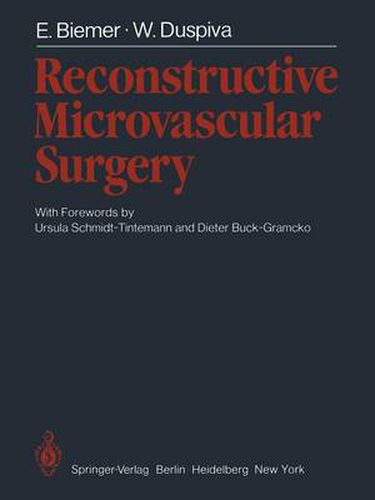Readings Newsletter
Become a Readings Member to make your shopping experience even easier.
Sign in or sign up for free!
You’re not far away from qualifying for FREE standard shipping within Australia
You’ve qualified for FREE standard shipping within Australia
The cart is loading…






This title is printed to order. This book may have been self-published. If so, we cannot guarantee the quality of the content. In the main most books will have gone through the editing process however some may not. We therefore suggest that you be aware of this before ordering this book. If in doubt check either the author or publisher’s details as we are unable to accept any returns unless they are faulty. Please contact us if you have any questions.
For many years, the operative manipulation of the most minute struc- tures was frustrated by the limitations of the human eye. With the introduction of the operating microscope by Nylen (1921), fine detailed anatomy was made visible, so that structures could be prepared, pre- sented and manipulated. Nylen used the microscope for treating dis- eases of the middle ear. In 1946 Perrit in the U. S. A. introduced the operating microscope into the field of ophthalmic surgery. In 1964, Smith, Kunze and Mitchen published reports on their clinical experi- ence using the operating microscope in nerve surgery. Using this tech- nique, it was possible to divide a peripheral nerve into individual fascicle bundles and reapir each bundle precisely. Following on from these developments, the term microsurgery was introduced to cover that branch of surgery which was carried out using the equiped eye - either by using 10upe spectacle magnifica- tion or, more commonly, the operating microscope. The term micro- vascular surgery developed for the operative treatment of small ves- sels below 2 mm in diameter. Experimental studies for the use of microsurgery in the clinical situation developed alongside its use on small research animals for transplantation models in immunological study. Microsurgical techniques were used in the transplantation of rat liver, kidneys, pancreas, heart and other organs. The clinical appli- cation of these microsurgical techniques is nowadays called recon- structive microvascular surgery .
$9.00 standard shipping within Australia
FREE standard shipping within Australia for orders over $100.00
Express & International shipping calculated at checkout
This title is printed to order. This book may have been self-published. If so, we cannot guarantee the quality of the content. In the main most books will have gone through the editing process however some may not. We therefore suggest that you be aware of this before ordering this book. If in doubt check either the author or publisher’s details as we are unable to accept any returns unless they are faulty. Please contact us if you have any questions.
For many years, the operative manipulation of the most minute struc- tures was frustrated by the limitations of the human eye. With the introduction of the operating microscope by Nylen (1921), fine detailed anatomy was made visible, so that structures could be prepared, pre- sented and manipulated. Nylen used the microscope for treating dis- eases of the middle ear. In 1946 Perrit in the U. S. A. introduced the operating microscope into the field of ophthalmic surgery. In 1964, Smith, Kunze and Mitchen published reports on their clinical experi- ence using the operating microscope in nerve surgery. Using this tech- nique, it was possible to divide a peripheral nerve into individual fascicle bundles and reapir each bundle precisely. Following on from these developments, the term microsurgery was introduced to cover that branch of surgery which was carried out using the equiped eye - either by using 10upe spectacle magnifica- tion or, more commonly, the operating microscope. The term micro- vascular surgery developed for the operative treatment of small ves- sels below 2 mm in diameter. Experimental studies for the use of microsurgery in the clinical situation developed alongside its use on small research animals for transplantation models in immunological study. Microsurgical techniques were used in the transplantation of rat liver, kidneys, pancreas, heart and other organs. The clinical appli- cation of these microsurgical techniques is nowadays called recon- structive microvascular surgery .